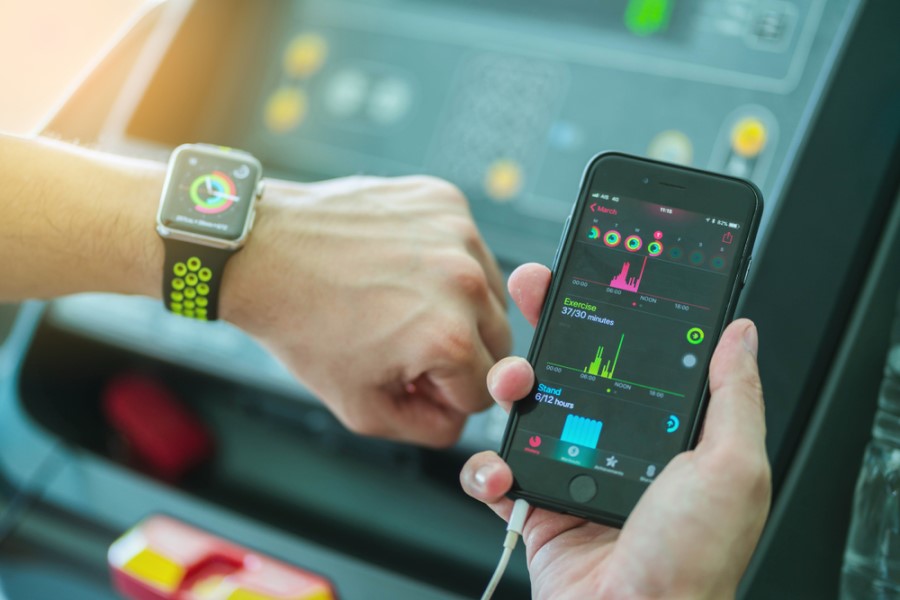How are insurers utilising data from wearables to promote preventative health measures?

Wearables have been around for several years, but usage has more than doubled in the last 12 months in the UK. They are becoming easier to use, cheaper to purchase and increasingly integrated and intuitive. Plus, the data insights they are giving users allow individuals to be more health-conscious than ever before – particularly as we see shifts in health behaviours after the pandemic.
This poses more opportunities for insurers to help an increasingly health-conscious population make positive changes and undo bad behaviours.
Traditional tech
When wearables first hit the market, insurers used them in a basic way to cut down on the amount of data required from their customers, understanding customer health actions and then combining this information with their own data to accelerate the underwriting process.
But as wearable technology has advanced, so have insurers' processes. They can now use this data in a more meaningful way to improve the wellbeing of their customers and help them create lasting healthy behaviour change.
A pandemic pause
The pandemic meant the world stood unusually and collectively still and created a moment of reflection. People questioned their purpose, their jobs, what made them happy and also their health. Many people felt in danger or that their health was at risk, prompting action.
We all know of someone who in the last 18 months has perhaps quit drinking, changed their diet, got into meditation or improved their physical wellbeing. Others have been keeping an eye on their step count, hitting those golden 10k steps every day for a week, and don't want to lose that feeling. Some have been watching their heart rates spike during a difficult Zoom call and then promised themselves a mindful five minutes to help reset.
People have become all too aware of the impact of wellbeing on the rest of their lives, and how being healthy is the most significant prevention of harm to their mental, physical, social and financial wellbeing.
Wearables have been a helpful tool to many individuals, painting a picture of their wellbeing and helping track progress and motivate them to take consistent action. For insurers, wearables have offered new possibilities too. They can better understand health behaviours to measure risk, and encourage and inspire people to better health, often through rewards.
Indeed, Milliman’s The role of wearables in private medical insurance report (2020) shows that insurers are using wearables in interesting ways. Some are motivating policyholders with discounts after they complete their 10k steps a day. Others are providing recommendations of content and action plans to help them reach their health goals. One insurer even uses Bluetooth-enabled toothbrushes to reward good dental hygiene with discounted premiums, while another uses devices to understand eating habits to then provide recipes and cooking tips and partner discounts.
Cardiovascular fitness
The ability to understand individuals' health is fascinating. One of our partners, PAI Health, takes it further. It explains that cardiorespiratory fitness (CRF) – the ability of an individual's circulatory and respiratory system to supply oxygen to the heart and skeleton muscles during sustained levels of exercise – is considered a vital sign for health and longevity. This is validated by research that shows physical activity can lower the risk of premature death, diabetes, hypertension, cancer, depression and obesity.
PAI (Personal Activity Intelligence) guides people on the optimal amount of physical activity to improve cardiorespiratory fitness and reduce the risk of cardiovascular disease and other lifestyle diseases. It's a personalised score calculated over a rolling seven days based on wearable data (heart rate and biometric data). Maintaining 100 PAI or more is associated with an average of 25% risk of cardiovascular mortality and 20% all-cause mortality. Risk reduction can be even more significant for those with chronic conditions.
This score is proven to be motivating for individuals – it's precise, personalised and meaningful, plus it is a more predictive mortality biomarker than counting steps and minutes. Insurers can include this metric in their apps and fitness age, which shows people where they stand concerning their cardiorespiratory fitness, to keep people motivated when they see improvements over time.
From payers to partners
Many customers view their insurance providers as just that, a provider. A transactional entity in which they will contact if they need to make a claim.
But with wearables and new tech, insurance providers can play a more significant part in their customers' wellbeing, repositioning themselves as a partner and creating a stickier relationship with their customers. The aim is to move from (hopefully) infrequent negative interactions to frequent positive interactions, guiding people on behavioural choices that help improve health – and potentially reduce health insurance costs.
This process helps with inclusivity too. People who may have been considered high risk to an insurer previously can demonstrate – through interactions with their wearables – that they are taking positive steps to help their health.
Perhaps not surprisingly, in the Milliman report, insurers are advised that the use of wearable technologies alone is unlikely to be enough to drive real change in lifestyle behaviours. As much as Covid-19 has impacted many individual's views on health, workplace wellbeing programmes now – aided by insurers and employers – need to show how they are supporting mental and physical wellness to get the best results from individuals and teams.
There's so much expertise on hand to help insurers and employers support their communities. Apps with guided workout videos, recipes, activity challenges that create connection, action plans that practically help people change their behaviours and mental health support – all in one place. Many of these apps integrate with individuals’ wearables and existing tech ecosystems too, so prevention over cure has never been easier.
The author is Martin Blinder, CEO and co-founder of Tictrac.
This article is provided by Tictrac.
Supplied by REBA Associate Member, Dialogue formerly Tictrac
We're an employee wellbeing platform dedicated to helping employees live healthier lives.







